Why has Italy been so influential?
The reason Milan became the centre of Italian fashion was Florence and Rome couldn't sort out a fight.
Italian clothing itself became successful abroad because people were tired of the 'haughty, arty' French.
Spurred by our recent discussion of Armani (below) and his degree of innovation, I've been reading more into the history of Italian fashion, and found it rather interesting.
Speaking to some Italian friends, many of them weren't aware of this background either, so I though it would make a nice article.
The easiest thing to forget is how recent the advent of ready-to-wear fashion is.
In Italy it was particularly late, only starting in any way after the Second World War. There was production of textiles and leather goods (Ferragamo, Gucci) before then - and of course couture and bespoke tailoring - but no real industrial production.
That changed with Italy’s extraordinary growth after the War, and particularly in the 1950s and early 1960s. That was when Italian designers first started to emerge, initially couture (Capucci, Simonetta) and then women’s ready-to-wear (Valentino, Missoni).
It’s no coincidence that so many of the Italian companies we’ve covered over the years on PS, from Bresciani to Bonafé (below), were founded in that period.
I find it particularly interesting how the style of Italian clothes at that time is described. In many ways you could use the same terminology today.
In the book Fashion, Italian Style, which accompanied an exhibition at FIT in New York in 2003, Valerie Steele writes: “Deeply ambivalent about French high fashion, Americans ardently embraced the casual elegance of Italian fashion.” The clothes are described in Newsweek at the time as “for real people - albeit rich people - to wear to real places” and as “refined sportswear”.
We’re talking about jersey dresses and pumps here - and for men, lightweight tailoring from the likes of Brioni - so it’s a long way from what we think of as even old-fashioned sportswear. But still, the Italian attitude - in contrast to the British as well as the French - has been quite consistent ever since.
This ‘easy elegance’ of Italian fashion seems ubiquitous now. It’s the foundation for nearly all tailoring we see, from designer brands to the high street. And for anyone that has grown up in the past 50 years, it can seem like that’s always been the case.
But it was the first real challenge to Britain’s menswear hegemony for centuries. And the growth of ready-to-wear allowed it to take over remarkably quickly.
First was the growth of Italian couture, in contrast to the cerebral French; then ready-to-wear that felt easy and accessible; and finally the big designers of the 1970s and 1980s, Armani (below) and Versace, followed soon after by Prada and Dolce & Gabbana.
So why was Italian fashion so successful?
It’s easy to generalise about the culture, to talk about dolce vita and la bella figura. But that’s a long way from explaining everything, even if it explains something. As the Neapolitan writer Luigi Settembrini said, Italian style is a question “constantly in danger of foundering on the stereotypical reefs ‘national characteristics of peoples’”.
What’s more certain is the fundamentals of craft and regional specialisation that Italy had. Even before clothing production started, Italy was where couturiers went to source the best lace, silk and other textiles, as well as bags and shoes.
Of course, this is an element we’ve covered on PS over the years. There’s the weaving around Biella, making use of the waters coming down from the Alps. The leather work in Tuscany (Mont Blanc visit below), originally based off local cattle production. The silk around Como, and so on.
As Steele says: “Creativity is universal, but that marriage of traditional craftsmanship, innovative design, and modern industrial technology is rare.”
Italy’s specialisation and small workshops laid the foundation of the success of ready-to-wear in the 1960s and 70s. What’s striking today, 50 years later, is that a lot of it still remains. Certainly compared to the UK and France.
A friend who runs an Italian mill commented to me recently: “Everyone complains that production is moving to China. And it is. But there’s still so much more left here that elsewhere, and we need to remember that so we preserve what we have left. China is getting more expensive every day.”
As a journalist, you only have to visit the mills around Huddersfield, and then a behemoth like Ermenegildo Zegna or Vitale Barberis Canonico (below), to see how much Italy still has to lose.
There are quite a few good books on Italian fashion, even if most of them focus on womenswear. They include The Origins of Italian Fashion (Sofia Gnoli) and Italian Fashion since 1945: A Cultural History (Emanuela Scarpellini). The bio on Brioni, Gaetano Savini, the Man Who Was Brioni (Morelli, Della Cagna and Finamore) is also nice visually.
I found Steele’s FIT accompaniment the most accessible, however. It has lots of illustrations, not too much academic detail, and good contextual quotes from contemporary media. It’s still mostly womenswear, but that’s inevitable.
One story in it that I found entertaining was the explanation of why Milan became the centre of fashion.
Italian fashion was born in Florence. Giovan Battista Giorgini organised the first show for Italian couturiers at his villa in 1951, and a year later the first grand show took place at Palazzo Pitti. (How many guys going to Pitti every year realise that this was effectively the birth place of all European fashion?)
Unfortunately there were more couture houses in Rome, and soon after the first Florence show a group of designers defected to their own Roman version. This split maintained for a few years, forcing buyers and media to choose between them.
That opened the way for Milan. As ready-to-wear became more prominent, the industrial city became a focus for production and boutiques. Soon fashion shows started moving there, and within 20 years Milan became a fashion capital, despite not having the same cultural or artistic heritage.
In 1952, American Vogue declared that “Italy is capable of producing a kind of clothes which suit America exactly...Namely: clothes for outdoors, for resorts...separates.”
Twenty-six years later, the same relaxed elegance was still being picked up on. Newsweek reported that Italy was popular because buyers were “weary of French fantasy clothes” and Italian RTW was “classically cut but not stodgy: innovative but never theatrical”.
A few more decades on, and I feel the characterisation still generally holds.
There are certainly Italian brands that tend towards the dramatic, and ones that are no less arrogant than anywhere else. But easy elegance is still something we turn to Italy for.
The biggest change in the past 20 years has probably been the bleeding of cultures, as the internet has brought everyone closer. Swedish and Japanese brands are doing things in just as chic and relaxed a manner.
But they all owe a big debt to the past 50-plus years of Italian style.
Books included in this article below. References, quotes and information also taken from various PS interviews over the years.


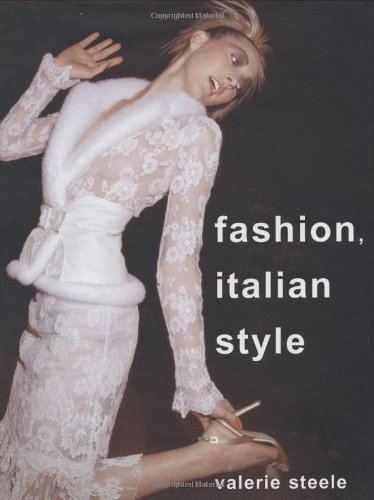
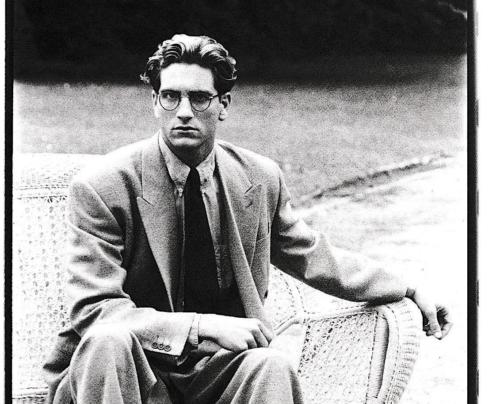
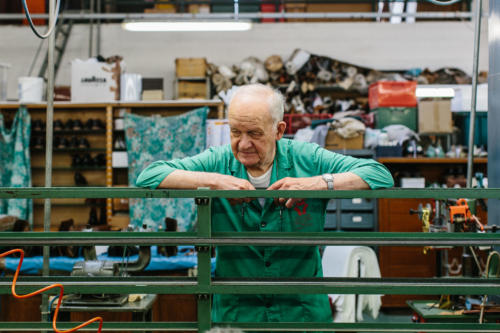
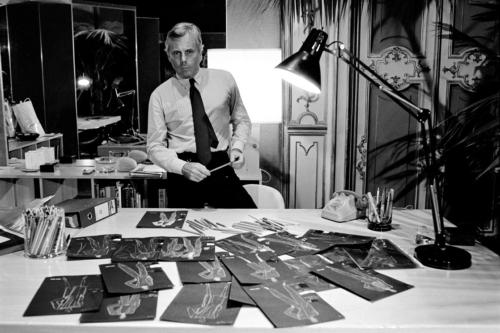
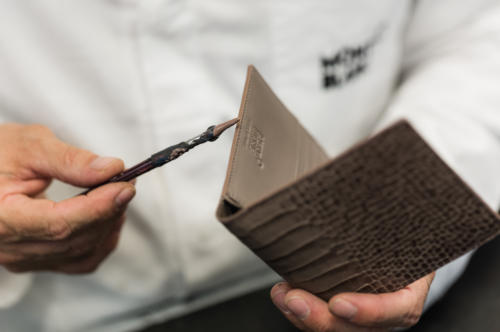
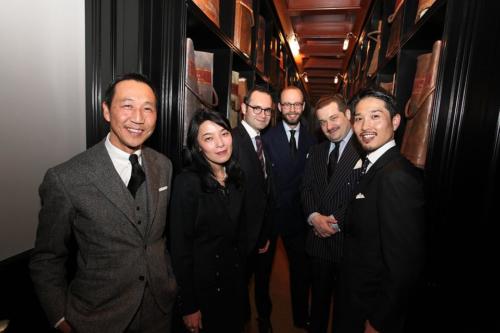
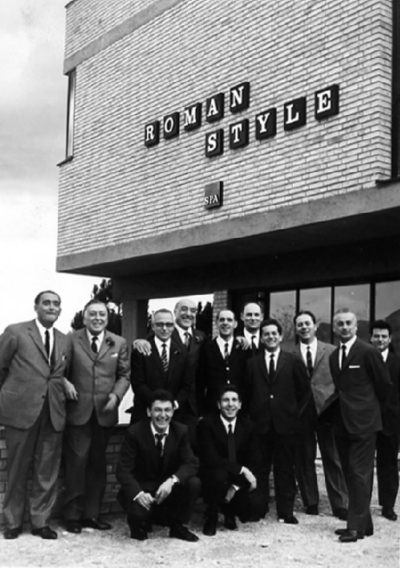


























The “bleeding of cultures” (due to the internet). What a fantastic typo 😉
Actually not a typo! I meant cultures bleeding into each other. Though blending would have worked well too, even if not quite as visual
Yes a sad loss, a downside to the whole multi-cultural, ‘fusion’ event of the last couple of decades. Sometimes I think it the menswear equivalent to the loss of distinct eco-structures. Ironic that our desire to embrace diversity often leads to homogeneity.
“the bleeding of cultures” you mean the “blending”?
Thanks for the nice article!
No Alexander – see comment just above you!
thanks. my bad. not my first language obviously 😉
Italy has always been the mixing house for Europe ever since the importation of silk from the east via Venice etc. I always regard Italian style as graceful, it flows better than N European style.
We do seem to be having our own mini Renaissance of small uk artisans using local fabric to create. This might be one of the benefits of COVID.
In my opinion Italian style for men has been a huge influence in clothing, a more general approach to how we dress and lifestyle. I can remember this from way back in my younger days in the 70s, including poring over copies of L’Uomo (the pictures anyway!) as a source of inspiration. Early influencer?
Simon- using a very blunt segway taking into account the influence on Japanese/ Korean style, do you know any retailers who can source the Coherence Corb Tweed coat (or any readers)? Rather than the ordering from outside the UK with all the associated duties and potentially other issues.
I don’t I’m afraid Stephen, no
Try one of the guys who stock coherence already. Clutch cafe, beige Habilleur, cultizm. Sure there are others. See if they can order one for you
Nice suggestion Sean, though orders are normally placed and produced for a season for a shop – there isn’t normally other stock in Japan that can just be ordered
There is an interesting passage in an interview with Jean Renoir from the 50ies: “I had fun dealing with the Italians, whom I found to be exceptional people, people who have maintained a classical freshness. …. When it comes to feelings, their feelings are very straightforward, very simple, which also is classicism.”
Classical freshness. Nicely put
Really enjoyed the article. A nice analysis, with bibliography, even.
One additional note on why Milan became the capital: while Florence (and Rome and Naples, to some extent) had the concentration of artisans/artists, bear in mind that Milan has long been the print media capital of Italy and also the single largest domestic market.
Good point on Milan, yes. It always had the commercial aspects that would attract fashion, just not initially the designers
Do we have Milan to thank for the Milanese buttonhole?
No, apparently it was actually first used in Paris, and named after a particular type of buttonhole thread – rather than the city
Thanks Simon. Yes, I’ve done a bit of research and it was indeed Parisian tailors who “invented” the Milanese buttonhole, and named it after the silk thread they used, which they bought form Milan.
Thank you Bruce
What a beautiful article Simon. Paying respect to the people that laid the foundation before us is, sadly, a disappearing art. In a world of fast (fast) fashion I believe it’s appropriate, borderline necessary, to take a breathe and slow down.
I know you’ve done a few travel articles (essentials in Naples; Hong Kong; etc.) and there are plenty of travel blogs out there but I would love to hear your thoughts on an ‘essential fashion spots (not just shops) in Europe’ based on 6 months… even though that still isn’t truly enough time!
(If there is already an article like this can someone link it for me!)
Nice idea Scott. I guess most of the destinations would be for shopping, and most of those are covered in our city guides – you can see them all here.
The nice addition would be manufactures that allow visitors, so you could go see a Northampton shoemaker, a Scottish knitwear maker. Unfortunately I don’t usually ask when I visit whether that’s possible.
France never really had a men’s style to export so would say really Italy took the crown from the U.K. in that sense, but I wouldn’t say American women were ambivalent in the least to French fashion…haute couture clients are still frequently American, and from the ‘50s to the ‘00s, American women made up the majority. Think Nan Kempner, Babe Paley, Jackie O etc. NTM, American films were often outfitted by French couturiers (Givenchy for Hepburn’s films for example). Even American couturiers like Bill Blass, De La Renta, Geoffrey Beene etc were obviously very influenced by French designers. Until Halston and Calvin Klein, I’d say American female tastemakers dressed almost exclusively in French or French-inspired clothes (with possible exception of Valentino).
Italian fashion combines great craftsmanship and style with a very, for lack of a better word, chill attitude.
A lot of British, French, American and now Japanese, well dressed gentlemen appear very conscious and planned about the way they dress. The kind of people that spend hours obsessing about tomorrow’s outfit.
Italian fashion evokes a much more casual approach. If it was a person it‘s that guy who randomly also put on a green cardigan — not because he read 12 articles about cardigan color theory — but because he just did. And then he just so happens to be the best dressed person in the room
I do not want to pick on Fritz’s comment, but personally I do not recognise his description.
On my first visit to Florence some thirty years ago, I was amazed at the well dressed men walking around, all very conscious of the fact that their outfit was perfect and expensive. These were clearly not the result of a happy coincidence.
Since then I’ve worked for several decades in a very international environment with colleagues from all over Europe and I realised that national stereotypes were very misleading indeed. A Brit is as likely to keep wearing the pinstriped-suit as if he had just left the City as he is likely to having embraced the much less defined international dress code. However, the pinstriped Brit is the one that everybody remembers. Italians can be as badly dressed as the average northern or middle European, although when they do dress well they do sometimes remind me of the Florentines I remember from that first visit… and it is the well dressed Italian everybody remembers. A middle-European who – in the view of the PS reader – may be very badly dressed has probably spend as much time thinking of how to present himself than a well-dressed Italian. And in my view a well-dressed Italian is likely to have put quite a bit of thought in his outfits, if not on a daily basis then at least in the shop or at the tailor. In conclusion, I have colleagues of every single nationality who are well dressed and others who are not well dressed.
As to the innate feeling for dressing well ascribed to certain nationalities and the lack thereof in others, I am particularly sceptical. The Italians currently have the advantage after decades of a consistently favourable press and PR that their particular style has become the current dominant one. Therefore, in their particular style they have a natural advantage. However, when in a couple of decades, when the wheels of fortune will have turned, it might well be another nationality whose innate sense of dress we’ll be lauding.
If anyone is interested in how the revolution in the Italian fashion industry was part of a wider post-war revival, I’d recommend Shawn Levy’s book Dolce Vita Confidential from a few years ago – gossipy but informative.
Thanks
There is light at the end of the tunnel.
With China’s human rights abuses becoming more and more apparent and with the environmental disaster that is fast fashion, I’m sure more people will be sourcing, manufacturing and shopping closer to home. This will include Italy and hopefully the UK.
SC –
This seems a perfect topic under which to field a random question for your consideration. Namely, I am wondering about the quality of Paul Stuart’s ‘Made in Italy’ line of leather jackets. Are these on the level of the Dunhill collection that is manufactured there? Or perhaps more similar to the Valstar line?
I would love to make a sweeping, presumptuous judgment of quality, simply based on provenance, but we know better around here…
Hey Ryan,
I’m not sure I’ve ever even tried on a Paul Stuart leather I’m afraid, so I can’t really comment. The quality has always been high in everything else – though often with a designer-level price tag – so I would think it would be very good. But I can’t comment specifically. Sorry
Thank you for taking the time, nonetheless. The PS deerskin leather bomber with beaver fur collar is reasonably close to filling the ‘brown leather jacket’ box I’ve wanted to check for some time. A pretty classic shape, but a bit more modern looking than an A-2 or a G-1… I’d assumed I’d need to go to Thedi for the specific custom piece I had in mind, but this is similar enough that I’ve been wondering if it might be a more practical way to scratch that sartorial itch.
Pleased I could help Ryan
I’ll report back, if/when I cave…
It seems that the Paul Stuart piece in question is a permutation of one that was made by, or for, Attolini…
Castigioline’s Book of the Courtier lays the groundwork in 1528. Little has changed:
“It will be well to speak of our Courtier’s clothes; which I think, provided they be not out of the common or inappropriate to his profession, may do very well in other respects if only they satisfy him who wears them. True it is that I for my part should not like them to be extreme in any wise, as the French are sometimes wont to be in over amplitude, and the Germans in over scantiness, — but as they both are, only corrected and improved in form by the Italians….I wish that our Courtier may be neat and dainty throughout his dress, and have a certain air of modest elegance, yet not of a womanish or vain style. Nor would I have him more careful of one thing than of another, like many we see who take such pains with their hair that they forget the rest. For things external often bear witness to the things within.”
Wonderful quote, thank you. I had forgotten he references the French in particular